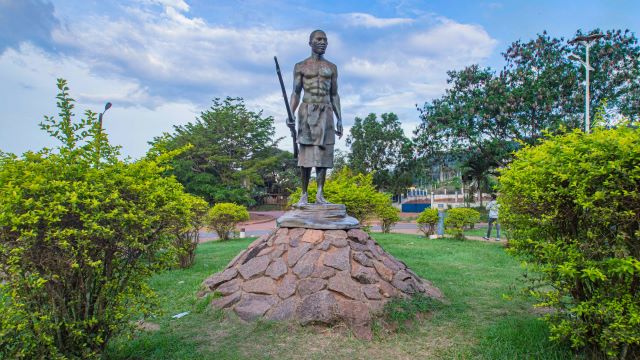On the Atlantic coast of Central Africa, Gabon offers a historical landscape shaped by the interplay of indigenous traditions and European colonial presence. Its cities and towns carry visible reminders of that past, while rural sites reveal traces of older, pre-colonial histories that continue to anchor cultural identity.
Libreville, the capital, embodies this layered narrative. Founded in the 19th century by freed slaves, the city evolved under French colonial administration into a showcase of European influence. The Cathédrale Sainte-Marie stands as one of its most striking landmarks. With stained glass windows filtering shafts of tropical light and a soaring wooden nave, the cathedral reflects both European ecclesiastical design and the adaptation of local craftsmanship. Not far away, the Presidential Palace occupies a commanding position on the waterfront. Built during the colonial period and later expanded, it serves as a reminder of the political continuity and tensions that marked Gabon’s journey to independence in 1960.
South along the coast lies Port-Gentil, a city defined today by its oil industry but also by colonial-era architecture that lines parts of its waterfront. Faded administrative buildings and warehouses bear silent witness to decades of French presence. The city’s markets, alive with the aroma of smoked fish and the chatter of vendors, create a vivid contrast—traditional commerce set against a backdrop of colonial structures that once regulated the movement of goods and people.
Inland, the city of Franceville offers another perspective. Once a colonial outpost linked to Gabon’s mining sector, it retains remnants of its industrial past. Rusted machinery and abandoned structures recall the extraction economy that shaped both the city and the nation. Surrounding communities preserve artifacts and traditions predating colonial rule, providing a counterpoint to the industrial narrative and highlighting Gabon’s long history of cultural resilience.
Even the country’s national parks carry historical resonance. Loango National Park, renowned for its elephants and pristine coastal ecosystems, contains archaeological remains and traces of earlier settlements. These sites underscore the continuity of human presence long before European arrival and affirm the deep relationship between Gabon’s people and its natural landscapes.
Together, these sites sketch a portrait of a nation negotiating its past while shaping its future. The cathedrals and palaces, the industrial relics and sacred landscapes, all stand as reminders of the cultural convergence that has defined Gabon’s history. They form not a static tableau but a living archive, interpreted differently by each generation and still shaping the identity of the nation today.
Sources
- Barnes, Andrew E. Making Headway: The Introduction of Western Civilization in Colonial Northern Gabon. University of Rochester Press, 1996.
- Perrois, Louis. Arts du Gabon. Orstom Éditions, 1985.
- Encyclopaedia Britannica. “Gabon: History and Cultural Life.” Accessed 2025.
- UNESCO World Heritage Centre. “Loango National Park and Cultural Heritage of Gabon.” Accessed 2025.


